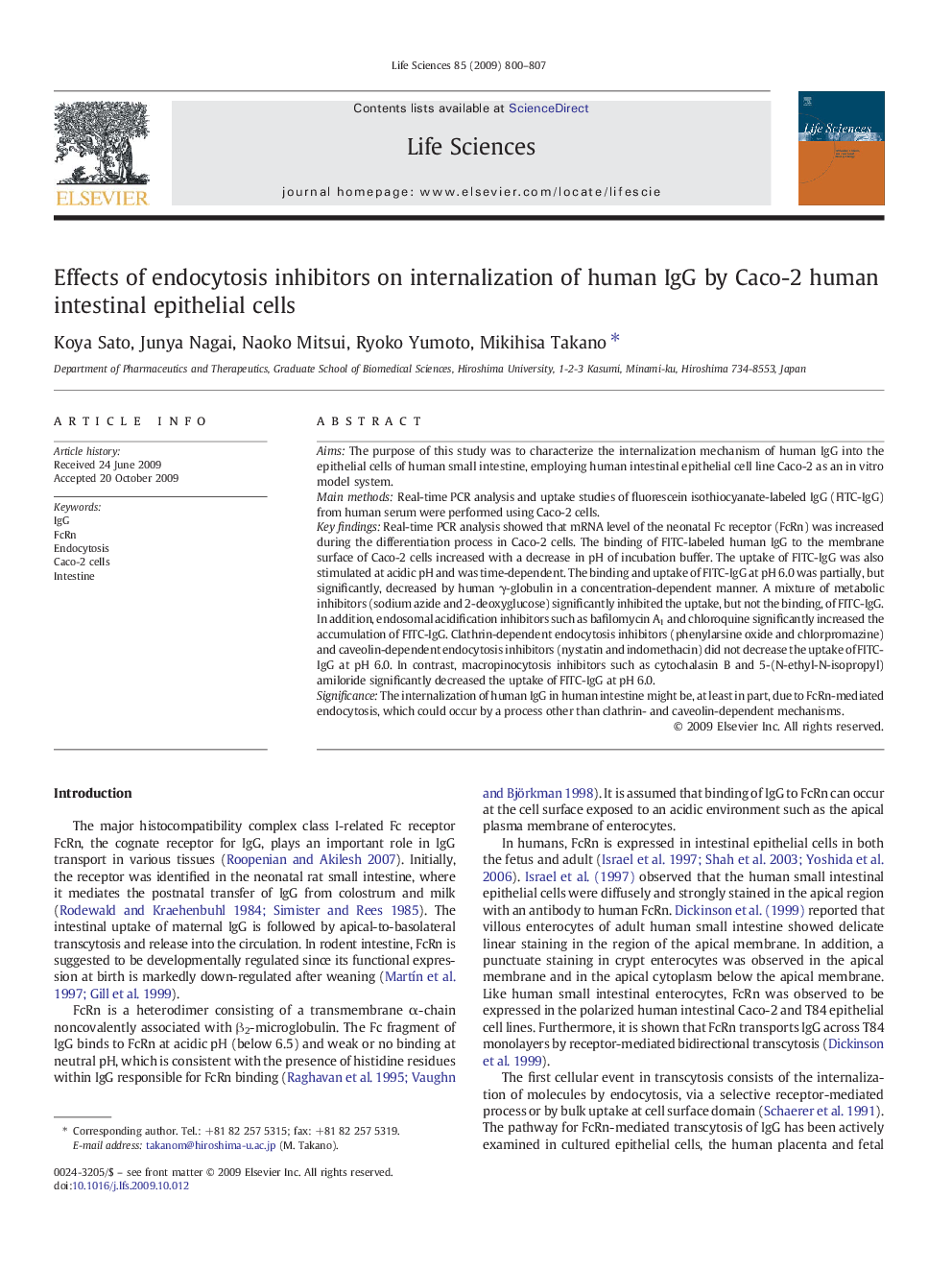| Article ID | Journal | Published Year | Pages | File Type |
|---|---|---|---|---|
| 2552188 | Life Sciences | 2009 | 8 Pages |
AimsThe purpose of this study was to characterize the internalization mechanism of human IgG into the epithelial cells of human small intestine, employing human intestinal epithelial cell line Caco-2 as an in vitro model system.Main methodsReal-time PCR analysis and uptake studies of fluorescein isothiocyanate-labeled IgG (FITC-IgG) from human serum were performed using Caco-2 cells.Key findingsReal-time PCR analysis showed that mRNA level of the neonatal Fc receptor (FcRn) was increased during the differentiation process in Caco-2 cells. The binding of FITC-labeled human IgG to the membrane surface of Caco-2 cells increased with a decrease in pH of incubation buffer. The uptake of FITC-IgG was also stimulated at acidic pH and was time-dependent. The binding and uptake of FITC-IgG at pH 6.0 was partially, but significantly, decreased by human γ-globulin in a concentration-dependent manner. A mixture of metabolic inhibitors (sodium azide and 2-deoxyglucose) significantly inhibited the uptake, but not the binding, of FITC-IgG. In addition, endosomal acidification inhibitors such as bafilomycin A1 and chloroquine significantly increased the accumulation of FITC-IgG. Clathrin-dependent endocytosis inhibitors (phenylarsine oxide and chlorpromazine) and caveolin-dependent endocytosis inhibitors (nystatin and indomethacin) did not decrease the uptake of FITC-IgG at pH 6.0. In contrast, macropinocytosis inhibitors such as cytochalasin B and 5-(N-ethyl-N-isopropyl) amiloride significantly decreased the uptake of FITC-IgG at pH 6.0.SignificanceThe internalization of human IgG in human intestine might be, at least in part, due to FcRn-mediated endocytosis, which could occur by a process other than clathrin- and caveolin-dependent mechanisms.
